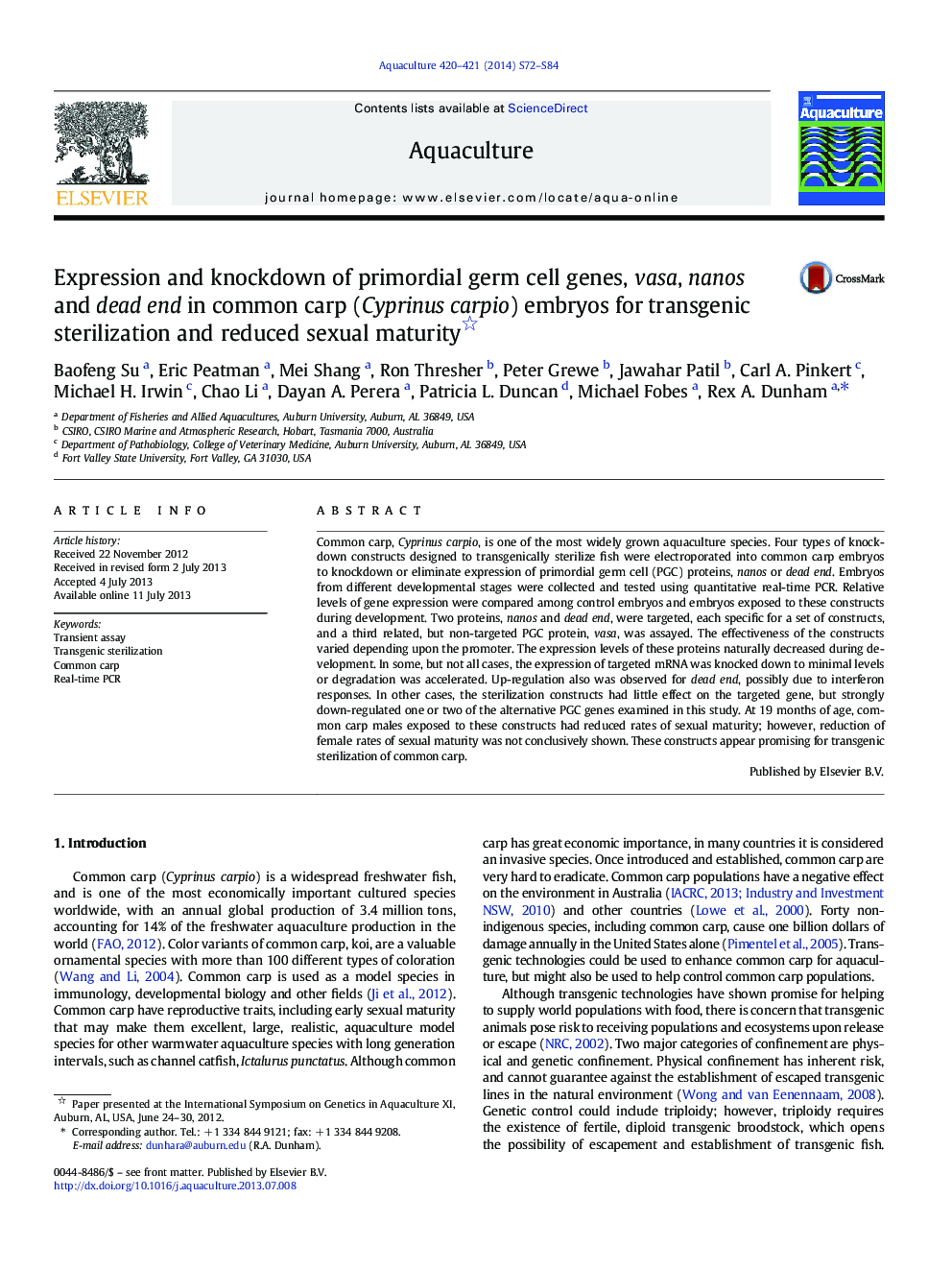| Article ID | Journal | Published Year | Pages | File Type |
|---|---|---|---|---|
| 8495317 | Aquaculture | 2014 | 13 Pages |
Abstract
Common carp, Cyprinus carpio, is one of the most widely grown aquaculture species. Four types of knock-down constructs designed to transgenically sterilize fish were electroporated into common carp embryos to knockdown or eliminate expression of primordial germ cell (PGC) proteins, nanos or dead end. Embryos from different developmental stages were collected and tested using quantitative real-time PCR. Relative levels of gene expression were compared among control embryos and embryos exposed to these constructs during development. Two proteins, nanos and dead end, were targeted, each specific for a set of constructs, and a third related, but non-targeted PGC protein, vasa, was assayed. The effectiveness of the constructs varied depending upon the promoter. The expression levels of these proteins naturally decreased during development. In some, but not all cases, the expression of targeted mRNA was knocked down to minimal levels or degradation was accelerated. Up-regulation also was observed for dead end, possibly due to interferon responses. In other cases, the sterilization constructs had little effect on the targeted gene, but strongly down-regulated one or two of the alternative PGC genes examined in this study. At 19Â months of age, common carp males exposed to these constructs had reduced rates of sexual maturity; however, reduction of female rates of sexual maturity was not conclusively shown. These constructs appear promising for transgenic sterilization of common carp.
Related Topics
Life Sciences
Agricultural and Biological Sciences
Aquatic Science
Authors
Baofeng Su, Eric Peatman, Mei Shang, Ron Thresher, Peter Grewe, Jawahar Patil, Carl A. Pinkert, Michael H. Irwin, Chao Li, Dayan A. Perera, Patricia L. Duncan, Michael Fobes, Rex A. Dunham,
